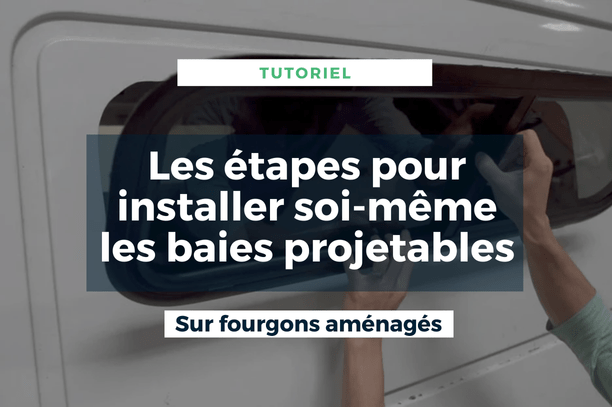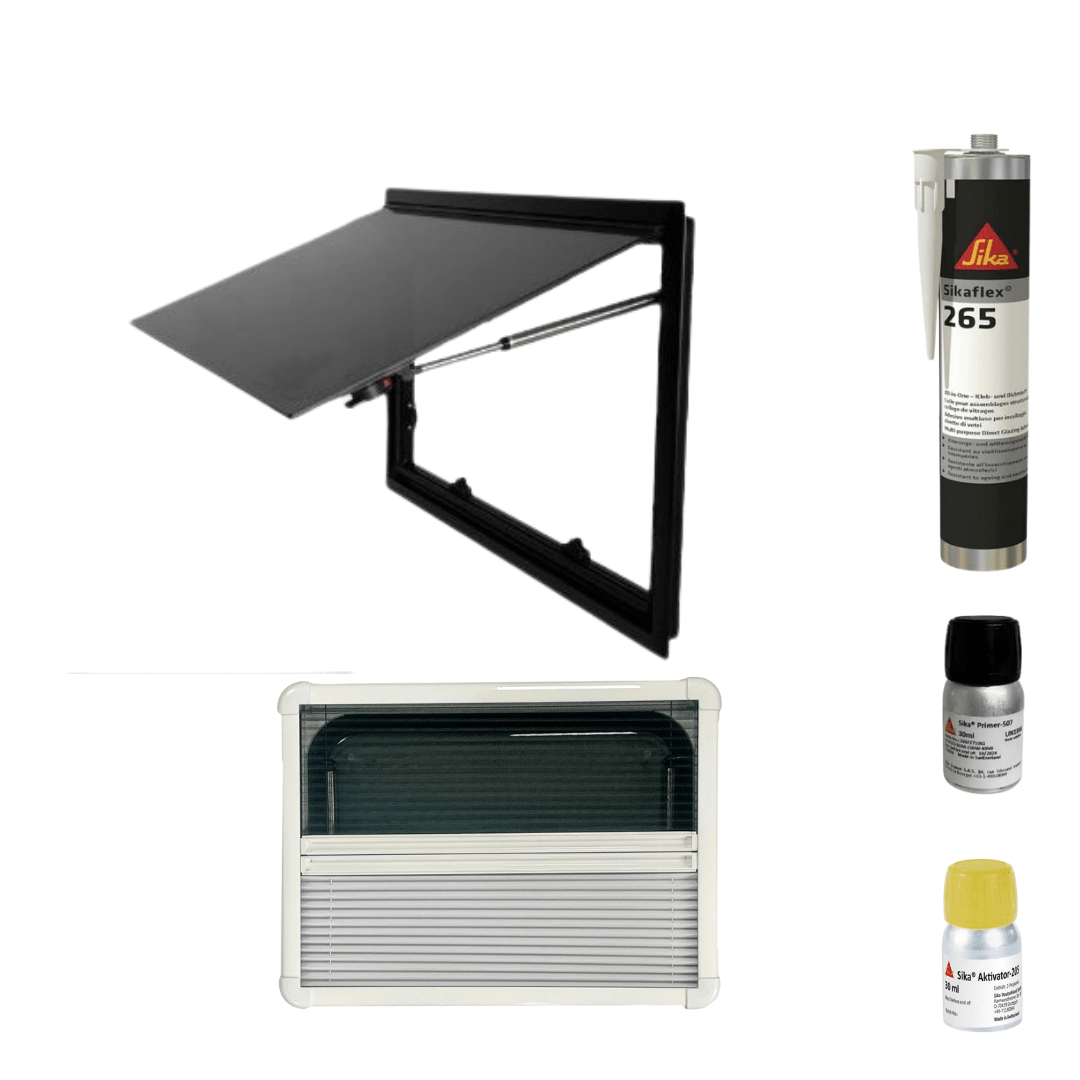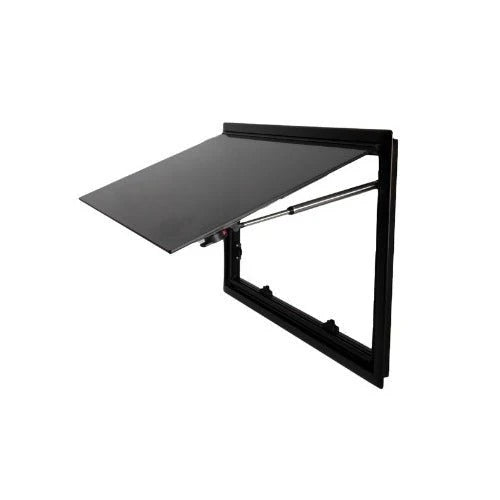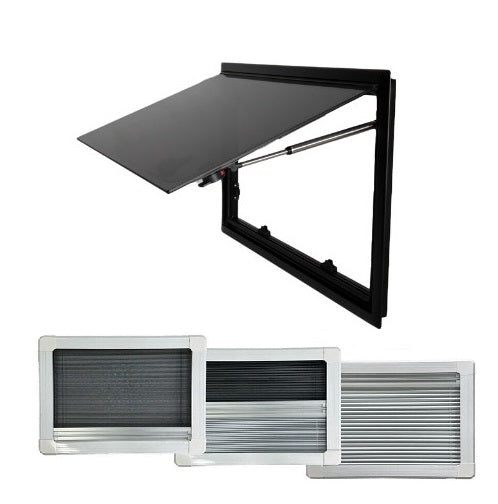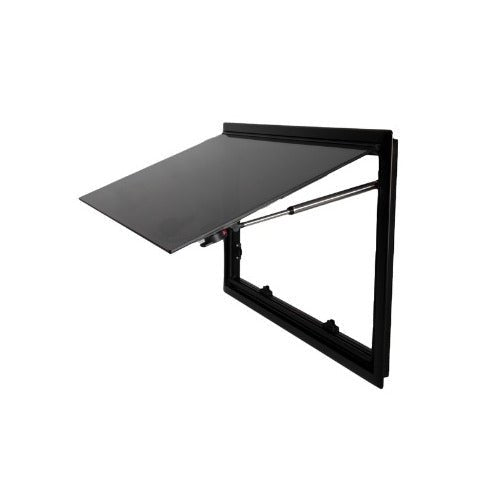We are addressing a crucial topic: the installation of Windows projecting and sliding windows on your converted van or motorhome!
In this article, we show you how to install fixed sliding windows!
-
Installation supplies for Push window on converted van
- Step 1: Cut the internal reinforcement
- Step 2: Polish the cut edges
- Step 3: Prepare the walls before cutting the bodywork
- Step 4: Cut the window hole with a jigsaw
- Step 5: Measure and install the appropriate wooden reinforcements for your window
- Step 6: Cut the wooden support frame with a hole saw and a jigsaw
- Step 7: Optionally add butyl tape to the window trim
- Step 8: Clean the contact surface and install the window
- Step 9: Assemble the interior frame
- Step 10: Gently screw the counter-frame onto the wooden frame and the Window
- Step 11: Waterproofing test (IMPORTANT!!)
- Step 12: Warning: Make sure to remove the drainage plugs before testing waterproofing
- Step 13: New waterproofing test
- Step 14: Admire your work
Our Vanlife conversion experts are here for you! Whether you have a question about our products or are looking for advice to transform your van into a true nomadic cocoon, contact us – we will be happy to guide you!
Although we installed the windows on a Sprinter, the steps and preparation can be applied to almost all vans and Windows windows of the same type, including converted Ducato, Crafter, Renault Master, Combi T5 vans, etc...
We opted for windows intended for a motorhome with a wall thickness of 35mm because they are a bit cheaper than windows specially designed for a Sprinter, but they did not require more work on our part to be installed correctly. In the end, we come out winners, as given the cost it was really worth it.
Below you will find links to the Windows.
Installation supplies for Push window on converted van
Below you will find links to the items we used for this project.
Push window 30×90 (identical to the fixed one we used): Link
Sealant glue: Sikaflex 710 TX
Step 1: Cut the internal reinforcement
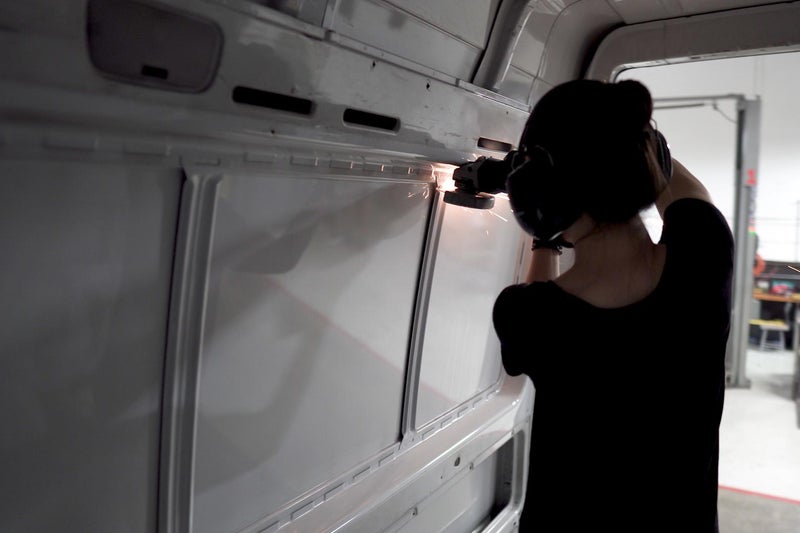
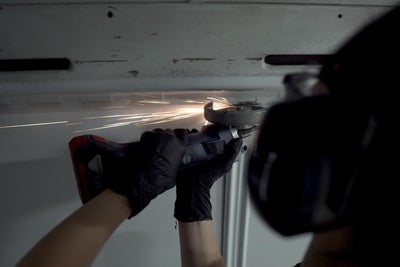
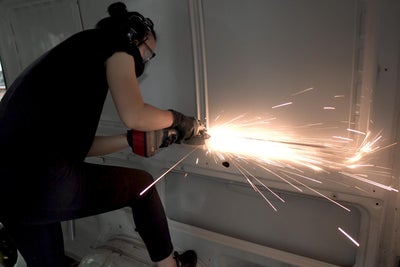
When installing your Window, you need to ensure there is enough distance from another air circulation source to maximize airflow throughout the van.
In our case, a roof fan was installed just behind the driver's area, so we positioned the Window to be installed at the rear of the van.
Before cutting the window hole, we had to remove the vertical reinforcement inside the van. We carefully used an angle grinder on the reinforcement trying not to hit the van's sheet metal.
Step 2: Polish the cut edges
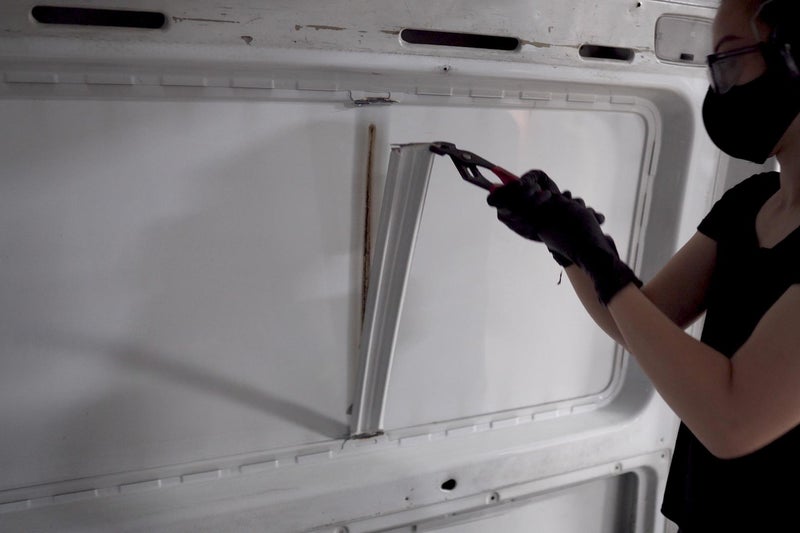
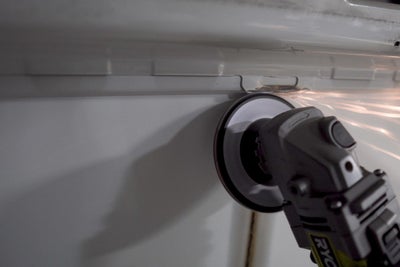
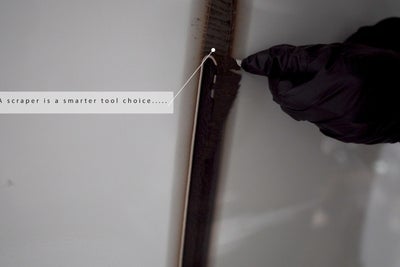
Once we cut the reinforcement, it was held on the van wall by a foamy adhesive and we simply used a pair of pliers to remove the reinforcement.
Then, we used our angle grinder to round and polish the sharp corners and scraped the adhesive with a flathead screwdriver. Although a scraper would have been smarter to use.
Step 3: Prepare the walls before cutting the bodywork
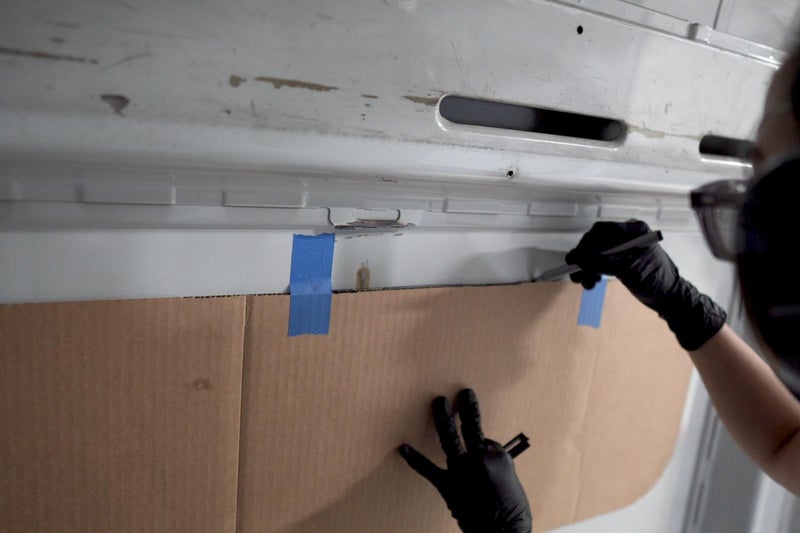
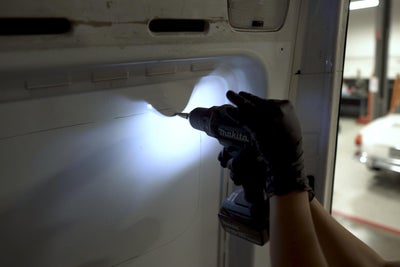
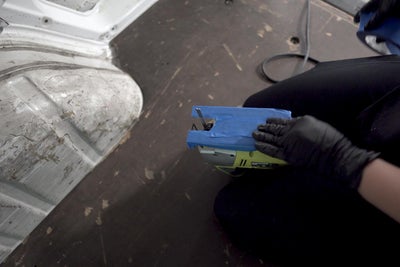
We traced the perimeter of the window on a piece of cardboard and cut it out to make a template. We stuck the template on the van wall and traced the perimeter with a marker. We positioned it by eye and then measured to the nearest reference point to be able to copy the position on the other side.
After removing the template, we drilled holes near each corner to insert the jigsaw blade. To minimize scratches on the van's paint, we applied tape on the bottom of the jigsaw. You can also apply tape on the part to be cut on the bodywork to reduce debris.
Step 4: Cut the window hole with a jigsaw
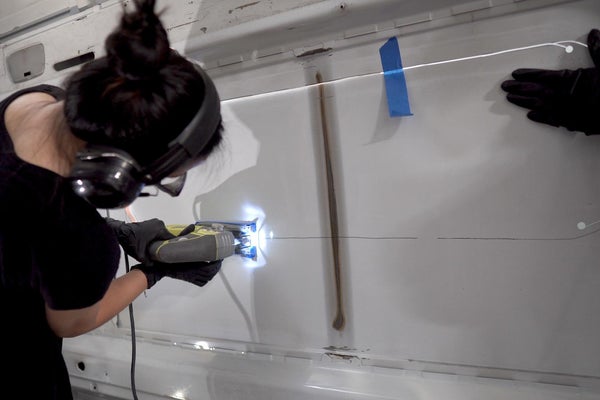
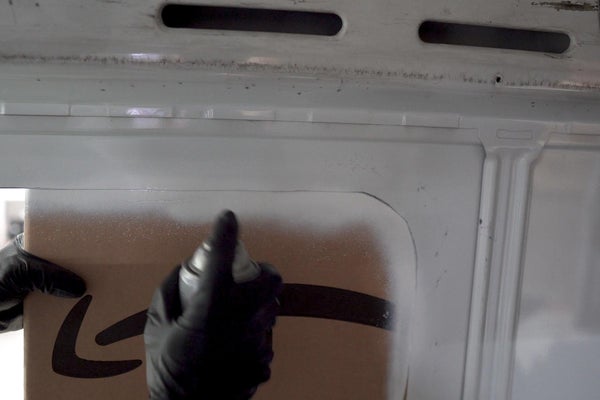
Using a metal-cutting jigsaw blade, we started from one of the holes we drilled and cut around the marking line.
The first two sides are easy to cut, but once you get to the third side, the structural integrity of the cut sheet metal is almost nonexistent, making it very wobbly during cutting.
We tried to stabilize it with tape by sticking the cut sheet metal to the rest of the bodywork, but it was not very helpful, so one of us held the cutout to keep it steady, and it worked relatively well.
Once we cut the window opening, we smoothed the edges and spray-painted anti-rust paint along the edges to protect the bare metal.
Step 5: Measure and install the appropriate wooden reinforcements for your window
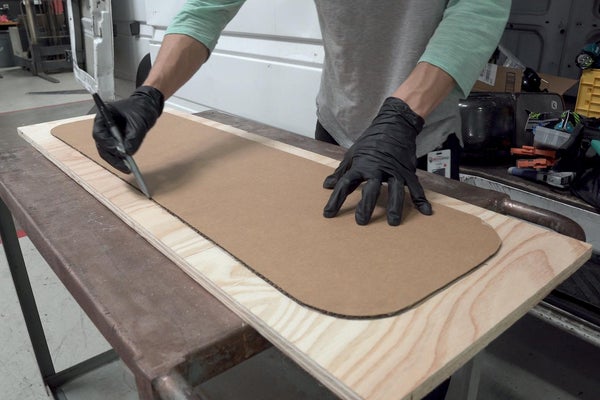
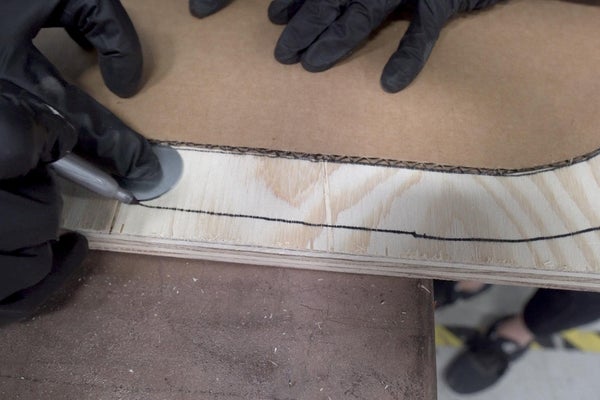
As mentioned earlier, the windows we bought are intended for motorhomes with a wall thickness of 35mm. To fill the difference, we traced the perimeter of the template we made earlier on a 10mm plywood sheet, then used a 2.5cm space to trace a wider frame border around the same template.
We cut out the inside and ended up with a rectangular frame that we will use to place between the window and the window counter-frame.
Step 6: Cut the wooden support frame with a hole saw and a jigsaw
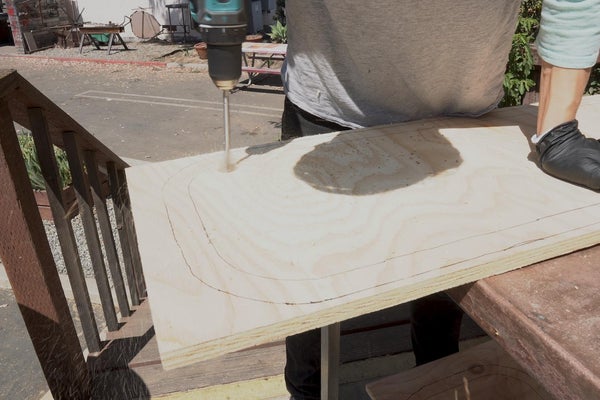
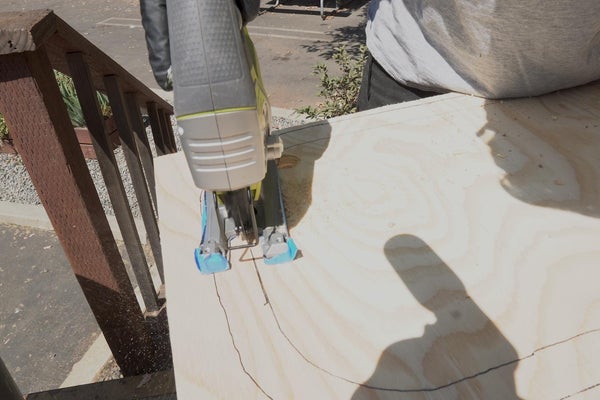
We cut out the inside and ended up with a kind of donut/rectangular frame that we can use to place between the window and the counter-frame (interior frame) of the Push window.
Step 7: Optionally add butyl tape to the window trim
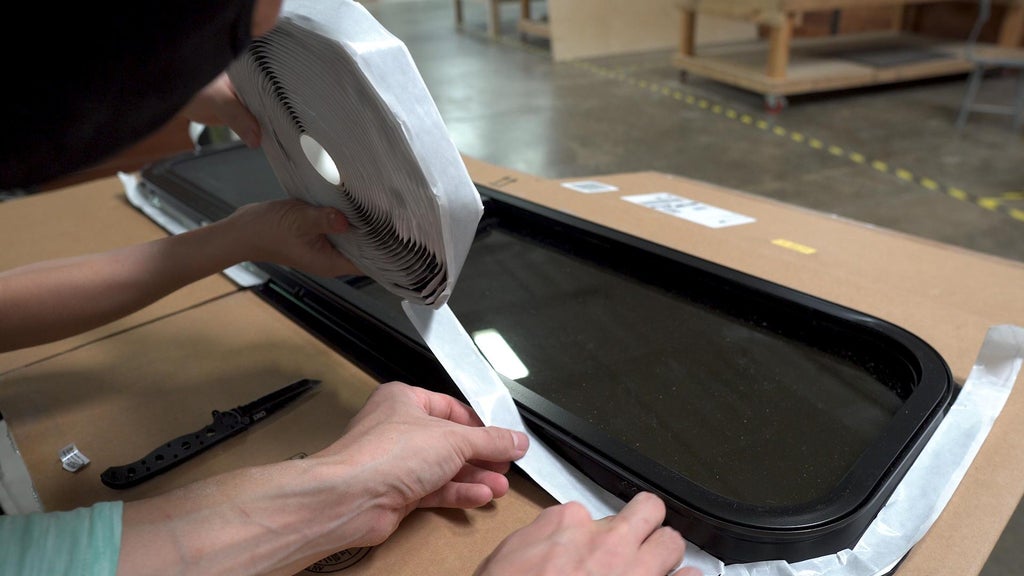
An alternative to sealant glue is to apply Butyl Tape. The same step can be done with a sealant glue like Sikaflex 710 TX.
Now that we have made the hole for the window cutout and the spacer, all that remains is to apply the sealant on the window so that it remains watertight.
We press the butyl tape around the window edge. One thing we did not take into account is that the flange has a slightly rolled edge, so we should have doubled the butyl tape to ensure there is enough sealant between the window and the van body.
Step 8: Clean the contact surface and install the window
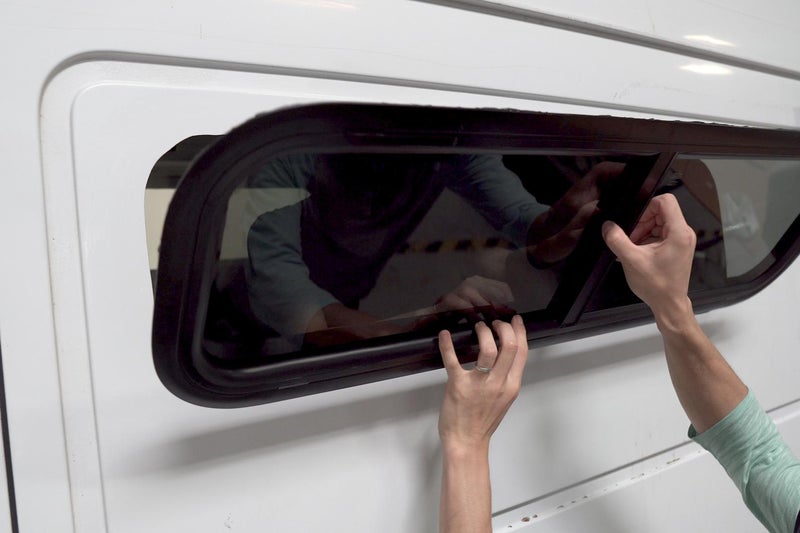
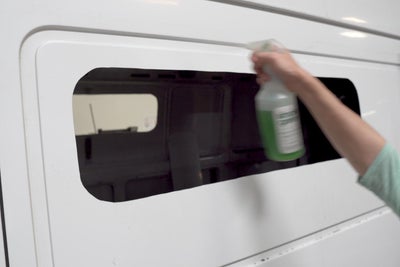
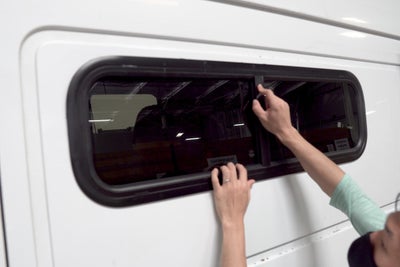
Fortunately, we cut the hole large enough for the window to fit without any additional cutting.
After dry fitting, we cleaned the contact surface to ensure there was no debris that could hinder the seal.
Then, we install the window from the outside. One of us stepped back a few meters to confirm the installation is parallel to the ground.
Step 9: Assemble the interior frame
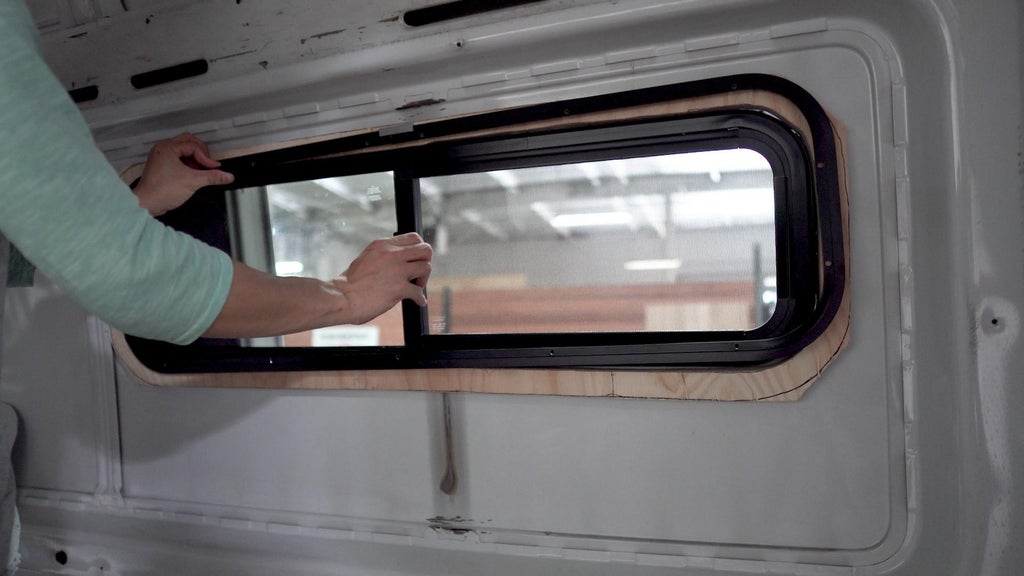
With one of us holding the window from the outside, we install the wooden donut frame then the counter-frame of the Push window.
We used #8 self-tapping screws to secure the window in place.
Step 10: Gently screw the counter-frame onto the wooden frame and the Window
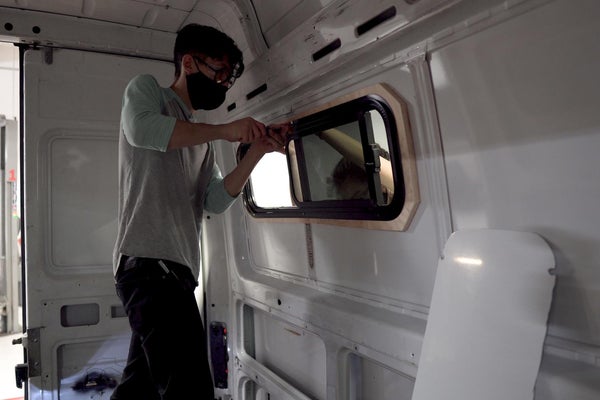
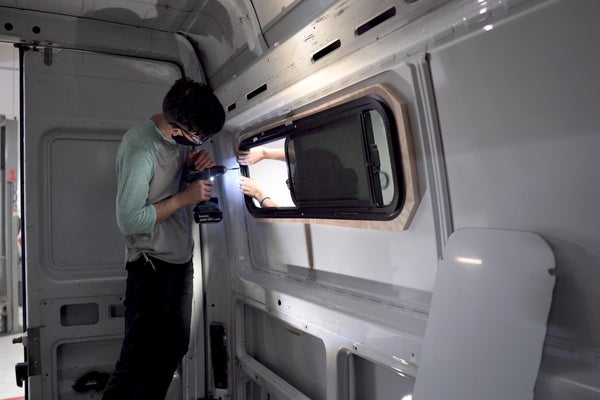
We recommend using a bit of lubricant on the self-drilling screws before driving them in as some might break. This will save you from having to drill new holes in the counter-frame. After learning our lesson on the first window, the installation of the second window went much more smoothly.
We suggest starting by screwing by hand, then lightly using your drill until the screws are properly inserted.
Step 11: Waterproofing test (IMPORTANT!!)
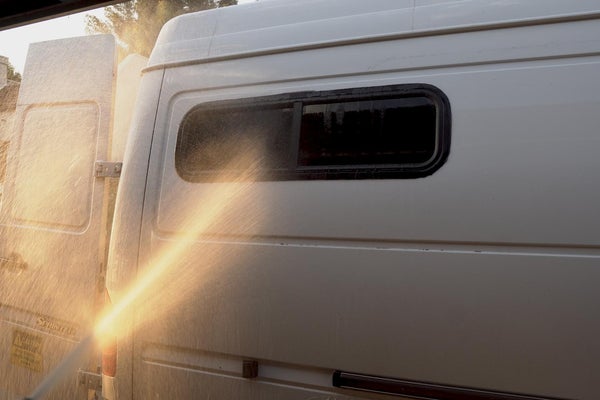
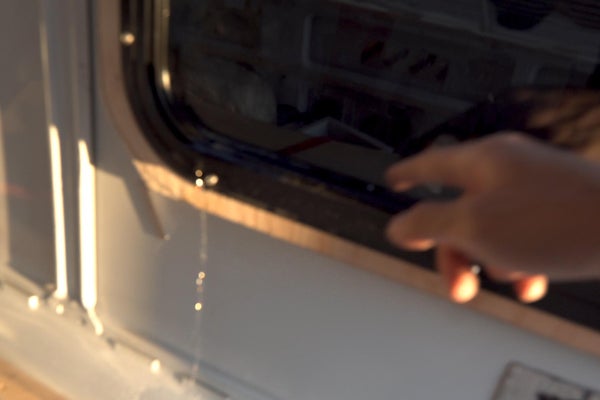
To ensure everything was installed correctly, we tested it with water from a garden hose... And surprise... we found many leaks.
Step 12: Warning: Make sure to remove the drainage plugs before testing waterproofing
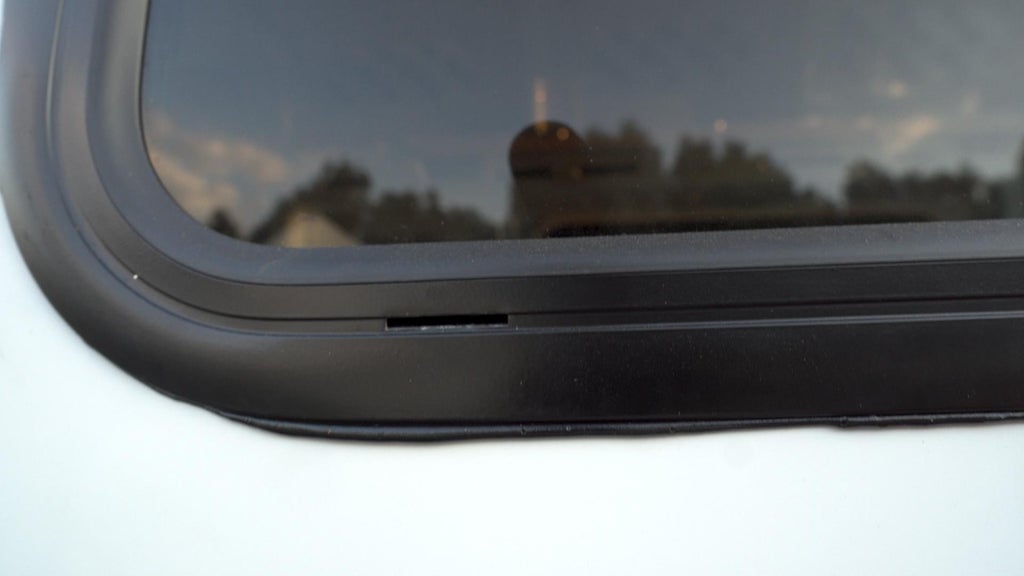
After a closer inspection, we realized part of the water infiltration was due to tiny gaps in the butyl tape. So we filled the perimeter with silicone sealant like Sika Flex.
But most importantly, we forgot to remove these drainage plugs, which are precisely used to evacuate water that gets into the frame of the Window. So... remove the drainage plugs before testing the waterproofing of your Window.
Step 13: New waterproofing test
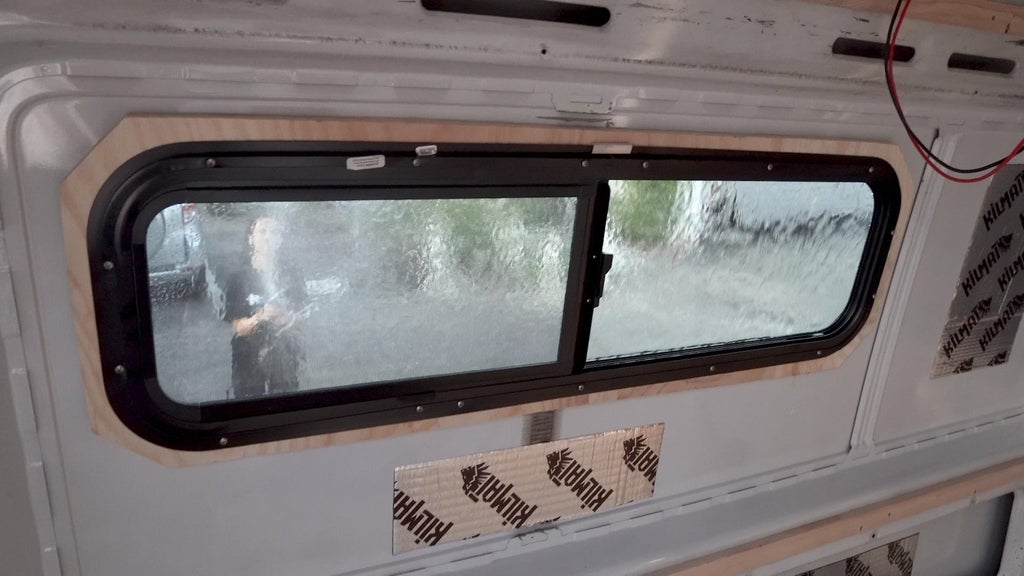
After fixing these small errors, we sealed the windows! It will be great to have these windows to look out of when hanging inside the van and to have the option to open them for a little breeze inside.
Step 14: Admire your work
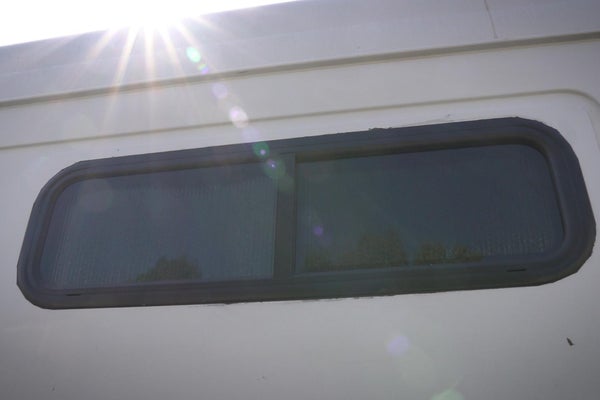
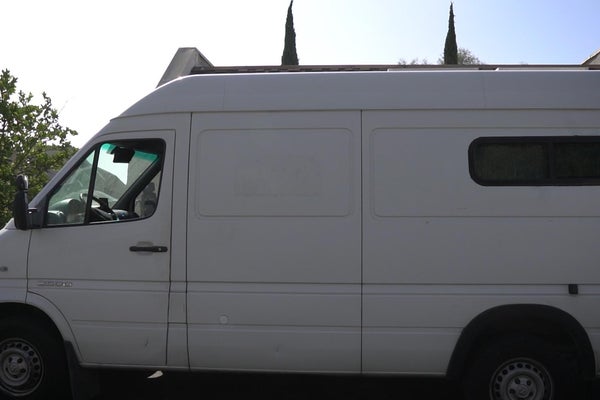
Note that this installation method applies to all types of Windows (projecting, sliding) with an aluminum frame. You can find here our Windows in stock and here all our sealants and promotional items.
The steps for installing Windows projecting and sliding windows on a converted van or motorhome
- Step 1: Cut the internal reinforcement
- Step 2: Polish the cut edges
- Step 3: Prepare the walls before cutting the bodywork
- Step 4: Cut the window hole with a jigsaw
- Step 5: Measure and install the appropriate wooden reinforcements for your window
- Step 6: Cut the wooden support frame with a hole saw and a jigsaw
- Step 7: Optionally add butyl tape to the window trim
- Step 8: Clean the contact surface and install the window
- Step 9: Assemble the interior frame
- Step 10: Gently screw the counter-frame onto the wooden frame and the Window
- Step 11: Waterproofing test (IMPORTANT!!)
- Step 12: Warning: Make sure to remove the drainage plugs before testing waterproofing
- Step 13: New waterproofing test

